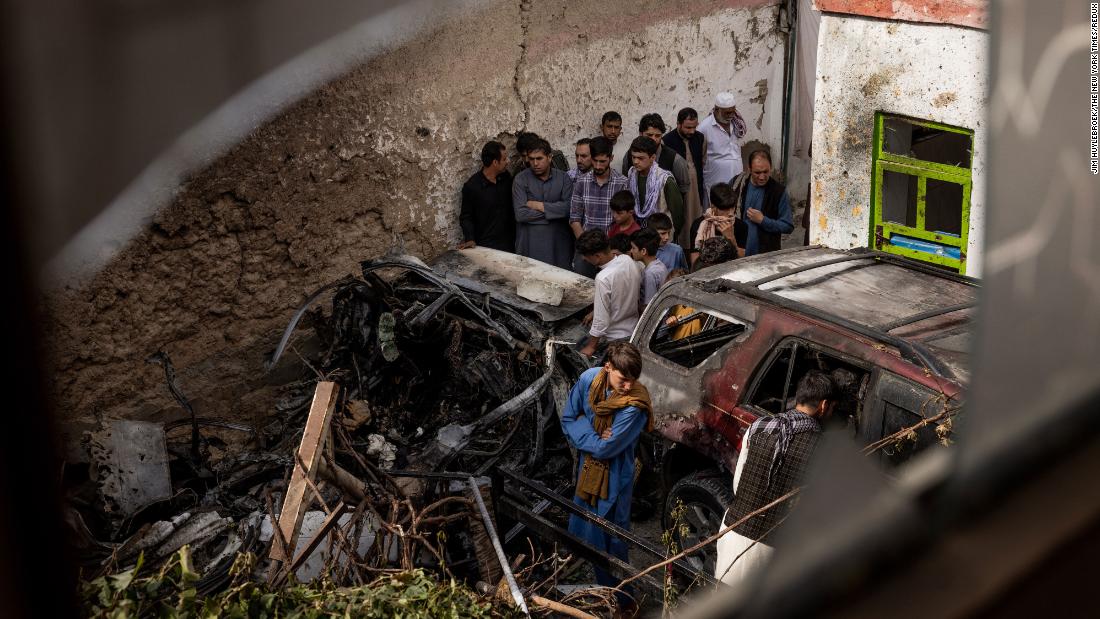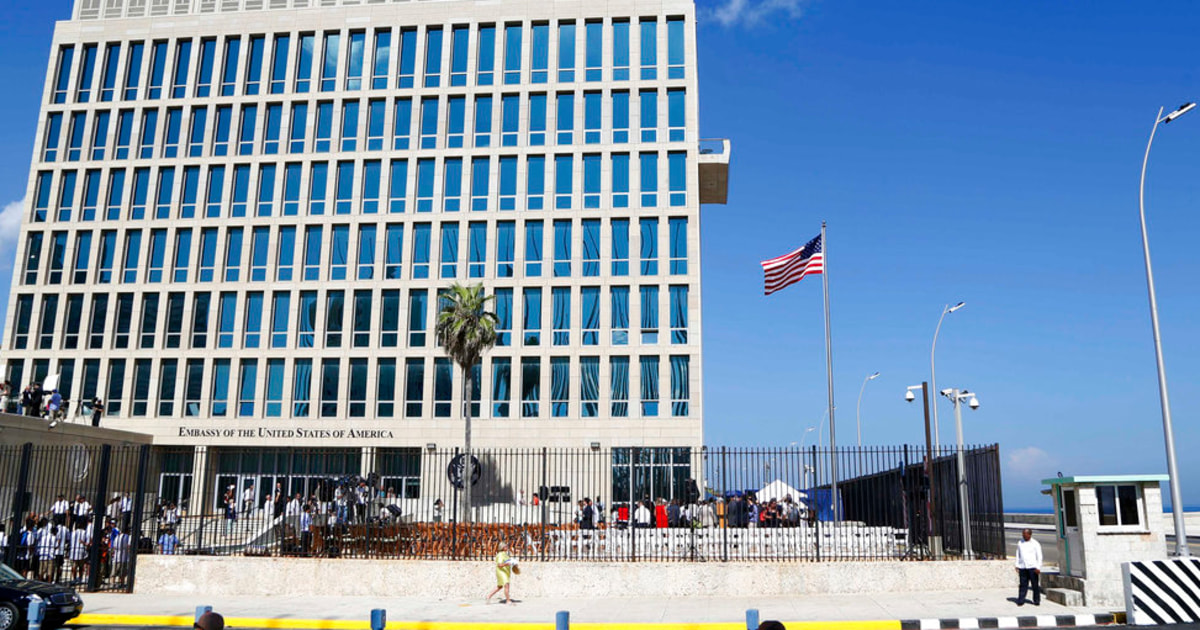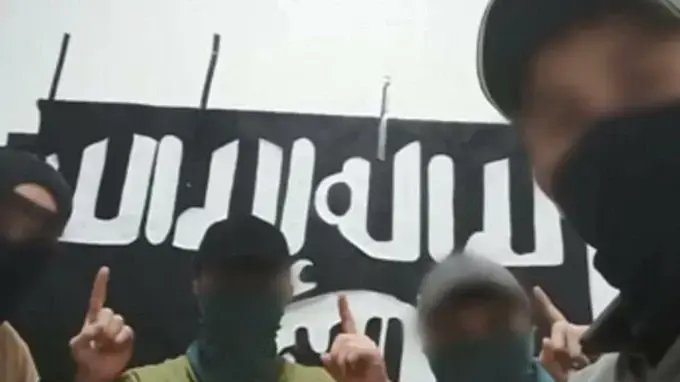This is how US general apologized after attack in Kabul 1:48
(CNN) -
Right after the US military launched a Hellfire missile to stop a white Toyota Corolla that was believed to be an imminent threat to US troops leading the evacuation at Kabul airport, the CIA issued an urgent warning: civilians were likely in the area, possibly including children inside the vehicle, according to three sources familiar with the situation.
It was too late.
The August 29 warning came seconds before the missile hit the car, killing 10 civilians, including seven children.
In the weeks that followed, the military insisted that it was a justified attack on a confirmed terrorist target, acknowledging that some civilians may have been killed.
But on Friday, after weeks of media coverage casting doubt on the legitimacy of the attack, the military acknowledged that no one in the car was related to ISIS-K as originally believed.
"It was a mistake," General Frank McKenzie, the top general of the US Central Command, said bluntly at the Pentagon.
It is unclear whether the military informed the intelligence community that they had decided to pull the trigger, if only for the fact that the situation was evolving rapidly.
The military calls these attacks "dynamic," which commanders in the field were authorized to carry out without consulting up the chain of command.
In some cases, the military may ask the intelligence community to "assign" its surveillance drones and other assets to monitor a particular car or location.
The intelligence community would share data on the targets with the Department of Defense in real time, but ultimately, it is the decision of the military ground force commander to take the attack.
advertising
Afghans refugees in the United States will go to these states after the Taliban take over Afghanistan
Some sources say that the lack of communication highlights a decision now urgent for the Joe Biden administration as it weighs how to carry out future attacks in Afghanistan without US troops on the ground: Will the Department of Defense or the CIA own it? The mission?
The CIA declined to comment on this story.
A spokesman for the United States Central Command did not respond to CNN's request for comment.
Two institutions
Counterterrorism, intelligence, and military officials unanimously agree: Without US troops on the ground, identifying the right target and launching successful attacks against legitimate ISIS-K or al Qaeda targets in Afghanistan has become infinitely more difficult. Trying to split the mission between two organizations, some current and former officials say, runs the risk of the dire tragedy in Kabul happening much more frequently.
"If the agency was tasked with observing the target for indications of 'go' or 'no go' criteria, they should have had the ability to obtain that information and affect the launch of an attack. If there was no way of knowing that when they were about to shoot, there is something really wrong there, "said Mick Mulroy, a former CIA agent and Pentagon official.
Mulroy realized that he had no first-hand knowledge.
But while lawmakers on both sides of the aisle have vowed to get to the bottom of the mistakes that were made in the instant before this specific attack, current and former officials also note that civilian casualties were a constant reality of the mission. of the United States in Afghanistan.
"It is a compelling summary of the entire 20-year war," said a US official, referring to the Aug. 29 attack.
CNN investigates US drone attack in Afghanistan 8:29
The intelligence community and the Department of Defense have worked together for years to carry out counterterrorism strikes in Afghanistan, part of a long-standing effort to put the authority of drone strikes under military command under the theory that there would be more accountability and transparency around civilian deaths.
But the flow of information and decision-making between the two organizations sometimes hits the gap between the institutions and, in any case, the CIA and the Department of Defense operate under different standards to execute attacks of this nature.
Some former intelligence officials go one step further and claim that CIA drone strikes kill far fewer civilians than the military, but the agency's figures are not public, and outside groups tracking victims of the Drone strikes say the US military routinely underestimates its collateral deaths, making it difficult to draw an accurate comparison.
Joe Biden's administration insists it has the tools to carry out successful missions "over the horizon."
McKenzie noted Friday that the failure of the Aug. 29 attack does not predict challenges "beyond the horizon."
"This was a self-defense attack based on an imminent threat to attack us," McKenzie said.
"That is not the way we would attack on a mission (on the horizon)," because the standards would be higher to carry out such an attack, he said, and "we will probably have many more opportunities than we had under this extreme pressure from time to take a look at the target. "
Yet sources tell CNN that the Biden administration is still grappling with the mechanics of how it will structure the counterterrorism mission in Afghanistan in the future.
Some intelligence officials privately dismiss the "over the horizon" in Afghanistan as "over the rainbow."
Building an attack
For eight hours on August 29, intelligence officials tracked the movements of Zemari Ahmadi, a former worker for a US aid group, based on a tenuous connection to ISIS-K: Ahmadi had a brief interaction with people in what the military believed it to be an ISIS haven.
That faint clue led military commanders to misinterpret Ahmadi's movements over the course of a relatively normal day.
They saw him load jugs of water in the back of the car to take home and believed they were explosives.
What the military commanders insisted was a large secondary explosion after the Hellfire hit the Corolla - indicating, top leaders believed, explosives in the trunk - it was most likely a propane tank located behind the car. parked car.
The military commanders did not know Ahmadi's identity when they began tracking his movements.
"We now know that there was no connection between Mr. Ahmadi and ISIS-Khorasan, that their activities that day were completely harmless and not at all related to the imminent threat we believed we faced, and that Mr. Ahmadi was just as innocent. , a victim like all the others tragically killed, "Defense Secretary Lloyd Austin said in a statement.
ANALYSIS |
American politicians fight over the disastrous legacy of the Afghanistan war as Afghans face hunger
For weeks after the attack, senior military officials have publicly and privately defended the attack and the intelligence on which it was based.
The Chairman of the Joint Chiefs of Staff, Gen. Mark Milley, told reporters that the attack was "fair."
The Pentagon insisted that there was a large secondary explosion that could only have been caused by explosives in the trunk of the car, and that the secondary explosion was the cause of the high civilian casualty rate.
In the end, almost everything they claimed turned out to be false.
McKenzie on Friday rejected the idea that the mission was a "complete and utter failure."
"This particular attack was certainly a terrible mistake and we certainly regret it, and I have made it very clear that we take full responsibility. At the same time, we were executing a series of complex operations designed to defend ourselves," added McKenzie.
"So while I agree ... this attack certainly did not meet our standards ... I would not rate the entire operation in those terms."
Afghanistan








/cloudfront-eu-central-1.images.arcpublishing.com/prisa/KA3LQ5ZEAFEQXOIZXJEEVDUZUQ.jpg)